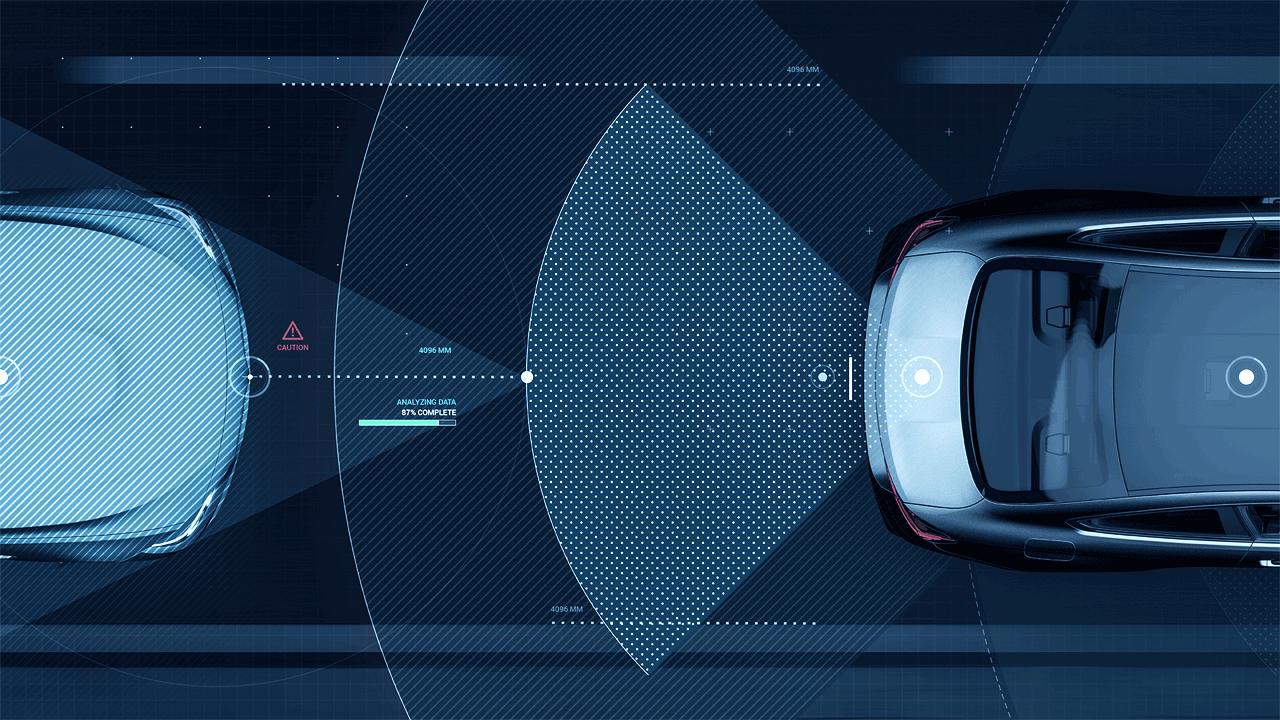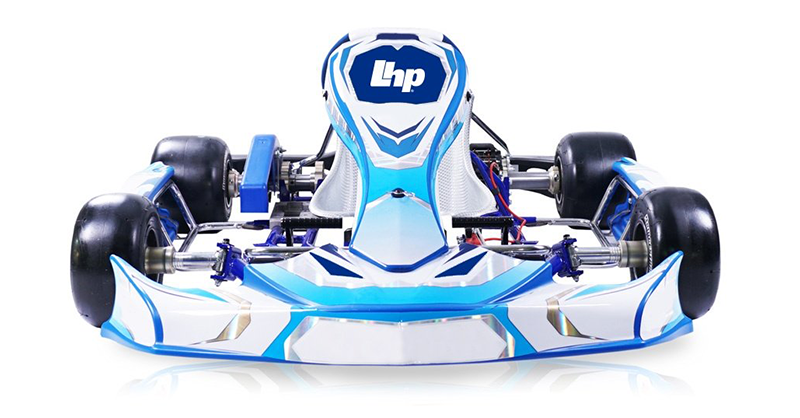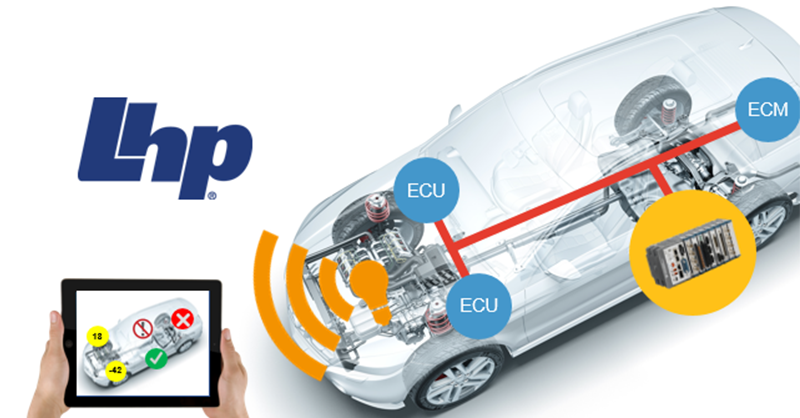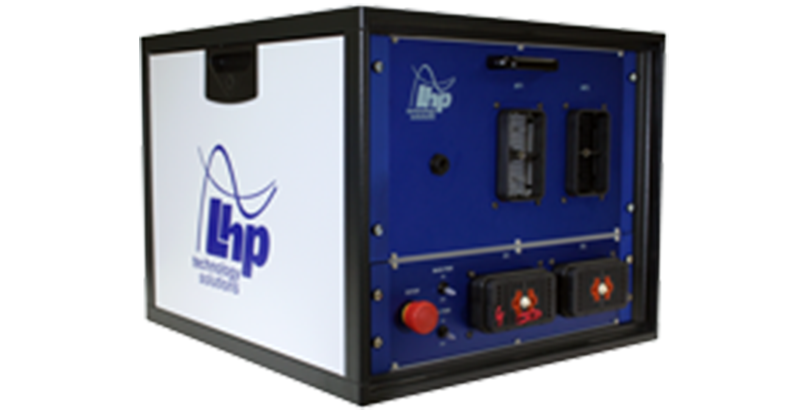Automotive Functional Safety and Cybersecurity Platform
LHP will be at the 2018 IoT Solutions World Congress Showcasing Embedded Cybersecurity On a Vehicle Platform
Unlock Engineering Insights: Explore Our Technical Articles Now!
Discover a Wealth of Knowledge – Browse Our eBooks, Whitepapers, and More!
Stay Informed and Inspired – View Our Webinars and Videos Today!
Exploring the future of software-defined vehicles through expert insights.
7 min read
 Ashutosh Chandel
:
Jul 26, 2023 3:20:42 PM
Ashutosh Chandel
:
Jul 26, 2023 3:20:42 PM

In the ever-evolving landscape of automotive technology, researchers and engineers are at the forefront of developing and refining the most transformative innovations for the vehicles of the future. Across global labs and test centers, Research and Development (R&D) teams are dedicated to enhancing the performance of upcoming vehicle models, ensuring they meet rigorous standards of safety, energy efficiency, emissions reduction, and cybersecurity. They are charting the course for advancements in artificial intelligence and autonomous vehicle technologies, striving to seamlessly integrate today’s leading automotive technologies, fuel tomorrow’s breakthroughs, and maintain a competitive edge in this dynamic environment. LHP stands as a nimble technology solutions provider. As a global leader in functional safety, offering consulting, training, and solutions in critical areas such as cybersecurity, ISO 26262, and embedded controls, we empower manufacturers and suppliers to keep pace with the swift transformations in the automotive industry. LHP is poised to assist your organization in leveraging today’s premier technologies and embracing future innovations.
Automotive researchers and engineers are constantly developing and optimizing the most impactful technologies for the vehicles of tomorrow. At labs and test centers around the globe, Research and Development (R&D) teams are focused on improving the way future iterations of vehicles will perform to standards of safety, energy efficiency and emissions reduction, and cybersecurity. They’re mapping the next steps in fields like artificial intelligence and autonomous vehicle technologies, finding ways to integrate today’s top automotive technology, power tomorrow’s innovations, and move forward competitively in this new landscape.
LHP Engineering Solutions is an agile technology solutions provider. As a global functional safety leader with consulting, training, and solutions packages in such critical areas as cybersecurity, ISO 26262, and embedded controls, we help manufacturers and suppliers keep pace with the rapid changes in the automotive industry. LHP can help your organization make the best use of today’s top technology, as well as future innovations.
The landscape of automotive manufacturing is becoming more digital, and the industry is in a state of tremendous flux. Automotive manufacturing has entered an era of nearly unprecedented change and fluidity. Corporations which have existed since the final days of the Industrial Revolution are now racing to reorganize, find the agility of a startup, and become something much more like a technology company than a car company.
Elon Musk and Tesla, especially, have initiated a technological and cultural shift with their disruption and innovation. The assembled mass of the global automotive industry has resisted the force of this change for a long time, but now those companies are also moving forward. There is disruption in the automotive industry from the outside (i.e., companies like Tesla, a technology company that started making cars), but also now from the inside, as the oldest and largest automotive organizations begin to massively realign themselves and their approach to technology.
The large-scale structural and cultural changes within these organizations would be difficult to overstate. Jim Farley, the chief executive officer (CEO) of Ford Motor Company, announced recently that his organization would re-embrace a vertical integration structure for the first time since well before there was any software in vehicles[1]. This vertical integration mirrors the Tesla model, using (for example) in-house programming of electronic control units (ECUs) for the first time, and opening the door for Ford to be able to offer software as a service (SAAS) and over-the-air (OTA) updates, adding features to their vehicles after the sale. This vertical restructuring, for Ford, also means moving battery processing and other supplied technology in-house. It is very likely that other OEMs will do something similar.
As another example, consider the chief technology officer of a typical San Francisco Bay Area technology company. This person typically takes a coding test to prove that they have the programming skill to understand what the company is all about. Currently, or up to the recent past, at an original equipment manufacturer (OEM), or an enterprise-level supplier, someone in the same position would not be expected to prove their coding or technical skills. The CTO position in larger manufacturing organizations has been an executive management role, emphasizing knowledge of financial and corporate strategy over skill with technology. However, this may well change; this role could become less entrenched in finance and revert to its original scope, becoming more involved in the technical aspects of the business like it is in startups or technology companies. This is in direct response to the hands-on and energetic CTO roles occupied by the startup and technology companies exerting pressure on the established OEMs and suppliers to reinvigorate their own innovations in order stay relevant and to compete in the new manufacturing business environment.
The changes to the technology present in our vehicles, and the way it’s used and integrated, have been remarkable in the last few years. Autonomous vehicles (AVs) and Artificial Intelligence (AI) are in the headlines constantly, even though it seems that progress toward true hands-off-the-wheel vehicle autonomy has slowed for the moment. Some of the features that actually have moved forward, however, are the semi-autonomous Advanced Driver Assistance Systems (ADAS).
ADAS features don’t get as much coverage in the press as autonomous vehicles, but they are arguably just as important. This is because these features are the bridge between our current use of the technology, and the future of fully-autonomous driving. While ADAS features like lane keeping assist systems and adaptive cruise control are important and useful features right now by themselves, the SAE and many manufacturers also consider them waypoints on a journey to full vehicle autonomy. ADAS features such as these appear in SAE International’s classification of autonomous functions, illustrated below.
|
SAE Level |
Examples of features at level of automation |
Classified as |
Human Driver Requirements |
||
|
SAE Level 0 |
Momentary warnings, like lane departure and blind spot. Also, emergency braking. |
SAE classes these three levels as “driver support features” |
The human in the driver’s seat is driving the car and is responsible for its operation. The onboard AI provides warnings but no active driver assistance. |
||
|
Level 1 |
These two feature levels: Advanced Driver Assistance (ADAS) |
Steering OR brake/accel assist: lane centering OR adaptive cruise control |
Even with AI assistance, the human in the driver’s seat is driving the car and is responsible for its operation. |
||
|
Level 2 |
Steering AND brake/accel assist lane centering AND adaptive cruise control simultaneously |
Even with AI assistance, the human in the driver’s seat is driving the car and is responsible for its operation. |
|||
|
Level 3 |
At these two levels, the car has features which can engage to drive the car under certain limited conditions. |
“traffic jam chauffeur” |
SAE classes these three levels as “automated driving.” |
SAE deems this level appropriate for low-speed semi-autonomous operation. The human in the driver’s seat is NOT driving the car when the auto features are engaged, but when the system requests driver take over, they must take over the controls. |
|
|
Level 4 |
“local driverless taxi” |
SAE terms this level appropriate for “local driverless taxi” duty. The human in the driver’s seat is NOT driving the car when the auto features are engaged. Pedals and steering equipment may or may not be installed in the car. |
|||
|
Level 5 |
Self-driving car |
This level is the only level where the car is completely autonomous and can drive everywhere in all conditions. The human in the driver’s seat is NOT driving the car when the auto features are engaged. Pedals and steering equipment may or may not be installed in the car. |
|||
|
SAE J3016 Autonomous Vehicle taxonomy table ©2023 LHPES.com |
|||||
Artificial intelligence is another one of the key factors that is being explored in the automakers’ race to integrate software into every facet of their vehicles. For example, sensing and avoidance is an important part of the operation of the autonomous and semiautonomous vehicles described in the table above, and manufacturers are exploring whether AI can be incorporated to aid with collision avoidance and efficient route planning through its advanced connectivity and interactions with other vehicles, infrastructure, and surroundings.
AI has the potential to not only communicate with other vehicles and the external infrastructure, but also with the internal communications network built into the vehicle. Modern software-defined vehicles (SDVs) easily contain well over 100 sensors, including cameras and meters, detection, and ranging arrays using light, sound, and radio waves. In addition, there are sensors to monitor the performance of the vehicle’s internal systems and, eventually, to monitor the driver as well.
Not only is AI being carefully examined for its potential to take command of certain onboard functions in a working vehicle, it has also been leveraged to improve the everyday, nuts-and-bolts operations of designing and building those same cars and trucks.
AI installed on factory weld and paint robots allows them to sense the movements of their human coworkers and adjust their own motion to avoid collisions[2]. Earlier, non AI-equipped robots would have to be isolated in safety cages which cordoned off the robot’s entire possible range of motion. The collaborative approach afforded by AI speeds up these operations and allows them to integrate more seamlessly into product flow.
In addition, when coupled with a set of cameras or a vision system, an AI-equipped robot could potentially detect defects and either fix them before the part exits the area, or alter the process to avoid further defects. Allowing the robot’s AI this latitude in decision-making not only reduces the number of total defects, but also helps to ensure that they are detected and responded to earlier, and also cuts the time between defect detection and rework completion.
Engineers using AI can take advantage of generative design to rapidly produce engineering drawings and models of strong, lightweight parts quickly from concept. Much as a programmer might ask an AI to suggest possible errors in a patch of code which won’t compile, a design engineer can instruct their AI to generate multiple solutions to a design problem within a set of parameters, allowing the engineer to select an iteration to be further expanded and optimized. This technique can greatly speed the development of a design from concept to model.
Coupled with the rapid advancements in 3D printing technology to produce prototypes, molds, fixtures and dies, and even finished complete production parts, AI-powered generative design is extremely useful for designers and R&D.
3D printing technology and its uses have also evolved; it’s no longer used only for rapid prototyping, and will likely continue to be used in innovative ways as it improves further. 3D printing can now produce molds and dies for fabricating carbon-fiber pieces used in Formula series race cars (and, increasingly, in street-driven vehicles, as well). Recently, designers have found they can simply 3D print the carbon fiber parts directly, bypassing the molding stage altogether. Not only is the prototyping rapid, often the same day from concept to proof, but also the time between prototype iterations can be very short, and the time from creating the final prototype to beginning a production run can be quite fast.
Technological innovation and integration in the automotive industry are undergoing tremendous change. Organizations that have been in business since the Bessemer Process was new are now devoting their time and resources to understanding the changing nature of their industry. Innovators continuously tweak today’s technology to develop tomorrow’s highly efficient, wholly connected, and software-defined vehicles.
Automotive manufacturing has already seen advancement on a large scale in recent years, with artificial intelligence and ADAS features at the leading edge, with the promise of autonomous vehicles edging nearer to becoming fully realized. The pace of this advancement is likely to continue, or even accelerate, in the coming years. The technology itself is rapidly evolving and on two fronts. The technology in use by consumers in the software-defined vehicle is changing very fast. In addition, the new solutions in use by the manufacturers and their suppliers to produce those vehicles more efficiently and safely, with less environmental impact, have been evolving quite rapidly.
The fast pace of this innovation in design and integration requires an engineering solutions partner with the agility to adapt to change rapidly and accurately. LHP Engineering Solutions is the partner your organization needs to help you come through this exciting time in a position of new advantage in the market.

LHP will be at the 2018 IoT Solutions World Congress Showcasing Embedded Cybersecurity On a Vehicle Platform

Powered by: LHP Engineering Solutions, AASA Incorporated, National Instruments, and PTC LHP Engineering Solutions, an engineering services provider...

Today, automotive researchers and engineers are constantly evolving their research to optimize propulsion system control technologies for the...